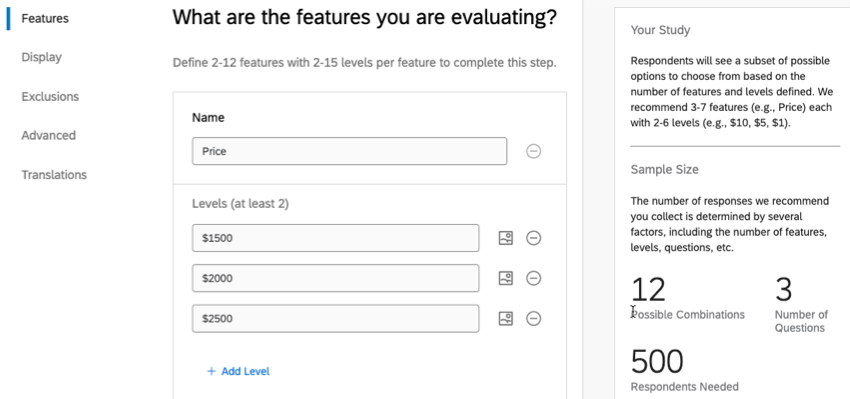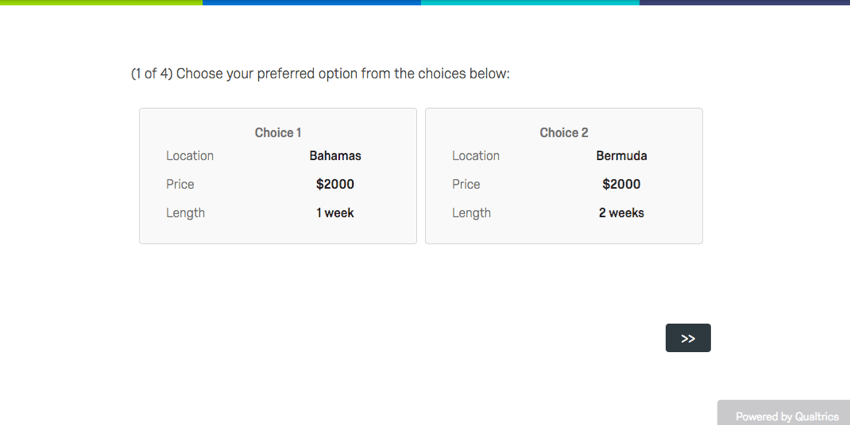Step 1: Defining Conjoint Features & Levels
Understanding Feature and Levels
Features are the overall concepts you are testing. If you are looking to determine the best vacation to offer, features might include duration, location, and price.
Levels are the different choices for each feature. For the feature location, possible levels include Bermuda, Jamaica, and the Bahamas.
Within the survey, your respondents will be presented with 1 level per feature in different combinations.
How many features should I offer? How many levels?
For a choice-based conjoint project, you should have about 3 to 8 features. Each feature should have about 2 to 7 levels.
We don’t want too few options, because then there isn’t much to test. But if we include too many, the number of respondents you have to survey to produce significant results massively increases. Too many choices can also lead to an increase in the number of packages each respondent is asked to choose between, increasing respondent fatigue and decreasing the value of your data.

